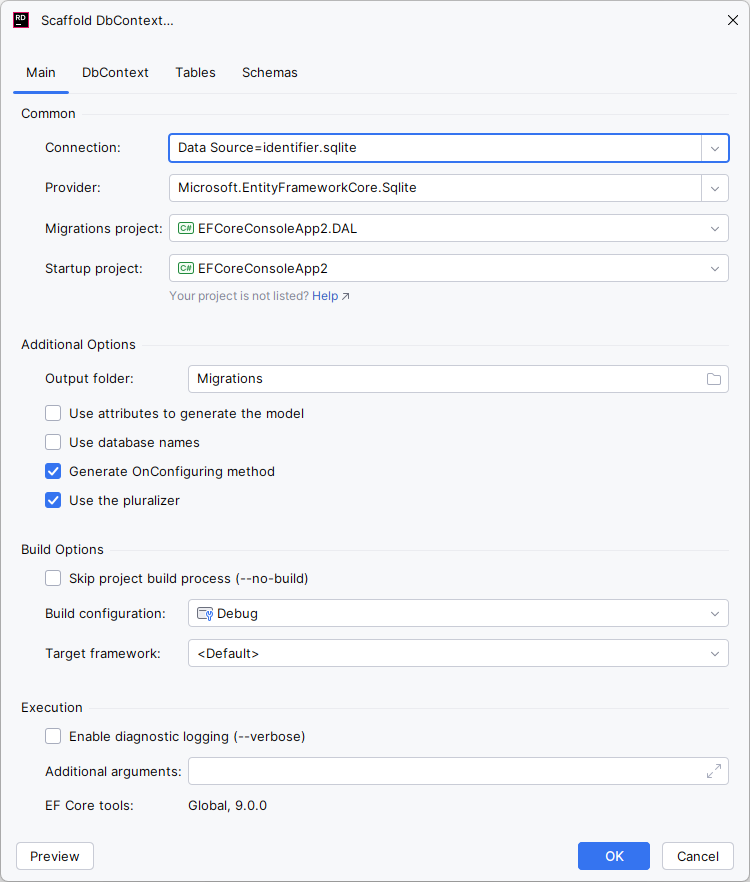Entity Framework Core: Scaffold DbContext
Common | |
Connection | Select the source database. You can choose from databases added to the Database window . |
Provider | The provider to use. Typically, this is the name of the NuGet package, for example, |
Migrations project | The project where the command will be applied. If you have invoked the command from the context menu of a specific project, this project will be preselected. |
Startup project | Project to be run when you start your application, containing the entry point or startup logic (like the |
Additional Options | |
Output folder | The folder where the migration classes will be generated. |
Use attributes to generate the model | Where possible, use attributes to configure the model. Otherwise, only the fluent API is used. |
Use database names | Use table, view, sequence, and column names exactly as they appear in the database. Otherwise, database names can be changed according to the C# name style conventions. |
Generate OnConfiguring method | By default, the command creates the |
Use the pluralizer | Automatically pluralize entity class names and |
Build Options | |
Skip project build process | Use this option when the build is up to date. Although this option reduces the execution time of the command, it may also be a source of potential problems if the project has not been built before running the command. |
Build configuration | Build configuration of the startup project, for example, |
Target framework | Target runtime to restore packages for when building the startup project. |
Execution | |
Enable diagnostic logging | Show verbose output if the Execute commands in terminal checkbox is enabled on the Tools | EF Core UI settings page . |
Additional arguments | Any additional arguments to pass to the application. |
